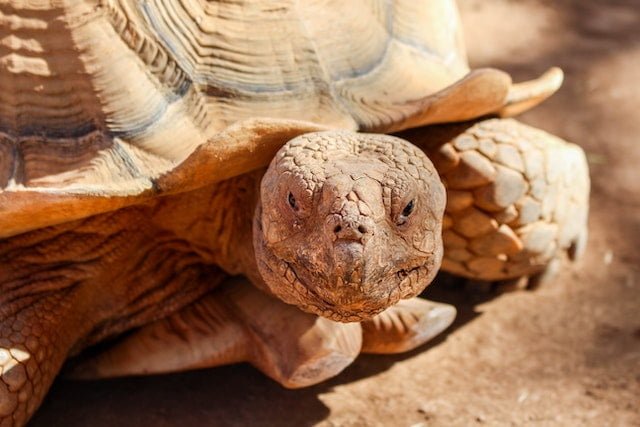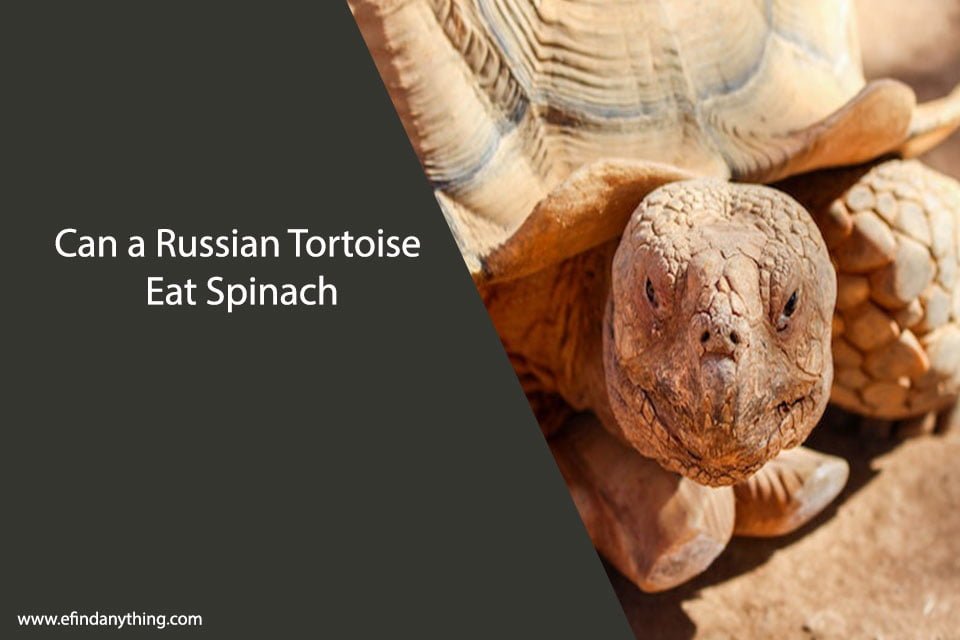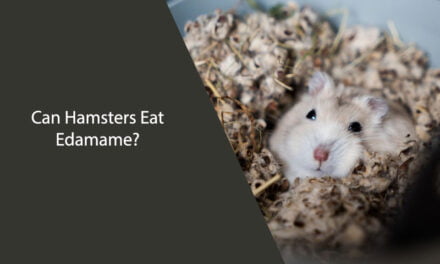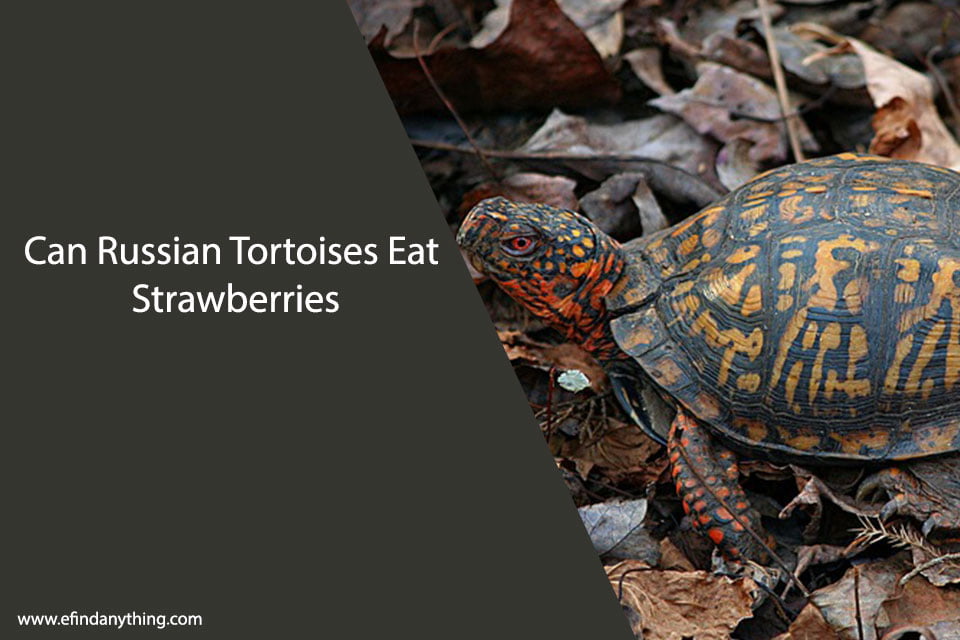Russian tortoises are a popular pet among reptile enthusiasts. These small, hardy creatures are known for their docile nature and low maintenance requirements. However, when it comes to feeding them, there can be some confusion about what is safe and healthy for them to eat. One question that often comes up is whether or not Russian tortoises can eat spinach.
The answer is yes, Russian tortoises can eat spinach, but it should be fed in moderation. Spinach is high in oxalates, which can bind to calcium and prevent its absorption. This can lead to calcium deficiency and metabolic bone disease in tortoises. Additionally, spinach is also high in nitrates, which can be harmful in large quantities. As a result, spinach should only be offered occasionally as part of a varied diet that includes other leafy greens and vegetables.
It’s important to note that while spinach is safe for Russian tortoises to eat in small amounts, it should not make up the bulk of their diet. A balanced diet for a Russian tortoise should consist of a variety of leafy greens, vegetables, and occasional fruits. Providing a varied diet not only ensures that your tortoise is getting all the nutrients they need, but it also keeps them interested in their food and prevents boredom.

Table of Contents
Understanding Russian Tortoise Diet
When it comes to feeding a Russian tortoise, it is essential to understand their dietary needs and requirements. A balanced diet is crucial for the overall health and well-being of your pet. In this section, we will discuss the primary and supplemental food sources for a Russian tortoise.
Primary Food Sources
A Russian tortoise’s primary food source should be dark, leafy greens, such as collard greens, dandelion greens, mustard greens, and turnip greens. These greens are high in fiber, calcium, and other essential vitamins and minerals that are necessary for a healthy tortoise.
In addition to leafy greens, a Russian tortoise should also be fed a variety of grasses, such as timothy hay, Bermuda grass, and orchard grass. These grasses are also high in fiber and provide a good source of roughage for your tortoise.
Supplemental Food Sources
While leafy greens and grasses should make up the majority of a Russian tortoise’s diet, there are also several supplemental food sources that can be added to their diet. These include:
- Vegetables: Carrots, squash, and bell peppers are all good options for a tortoise’s diet. However, these should be fed in moderation, as they are higher in sugar and lower in fiber than leafy greens.
- Fruits: Fruits should also be fed in moderation, as they are high in sugar. Good options include strawberries, raspberries, and melons.
- Protein: A small amount of protein can be added to a tortoise’s diet in the form of cooked chicken or boiled eggs. However, this should only be given occasionally and in small amounts.
It is important to note that some foods should be avoided when feeding a Russian tortoise. These include foods that are high in oxalic acid, such as spinach and rhubarb, as well as foods that are high in phosphorus, such as broccoli and kale.
In conclusion, a balanced diet is essential for the overall health and well-being of a Russian tortoise. A diet that consists of primarily dark, leafy greens and grasses, with supplemental foods added in moderation, will provide your tortoise with the necessary nutrients for a healthy life.
Can a Russian Tortoise Eat Spinach?
As tortoise owners, we want to provide the best possible diet for our pets. Spinach is a popular leafy green vegetable that many of us consume regularly and may wonder if it is safe to feed to our Russian tortoises.
While spinach is not toxic to Russian tortoises, it should only be fed in moderation. Spinach contains high levels of oxalates, which can bind to calcium and prevent its absorption. This can lead to metabolic bone disease, a serious condition that can cause deformities and even death in tortoises.
In addition to its high oxalate content, spinach is also low in nutritional value. It is not a good source of calcium, which is essential for healthy shell growth, and it is high in phosphorus, which can interfere with calcium absorption.
If you do decide to feed spinach to your Russian tortoise, it should be offered as an occasional treat and never as a staple food. A small amount of spinach once a week or less is generally safe, but it should be balanced with other calcium-rich foods such as kale, collard greens, and dandelion greens.
In summary, while Russian tortoises can eat spinach, it should be fed in moderation and never as a staple food. A varied diet that includes a variety of calcium-rich greens is essential for the health and wellbeing of your tortoise.

Effects of Spinach on Russian Tortoise Health
Positive Effects
Spinach is a nutritious leafy green vegetable that is often considered a superfood for humans. Similarly, Russian tortoises can also benefit from the nutrients present in spinach. Spinach is a good source of vitamins A, C, and K, as well as minerals such as calcium, iron, and potassium. These nutrients are essential for the growth and overall health of the tortoise.
Calcium is particularly important for the shell and bone development of the Russian tortoise. Spinach contains a good amount of calcium, which can help prevent metabolic bone disease in tortoises. Moreover, the high fiber content of spinach can aid in digestion and prevent constipation in tortoises.
Negative Effects
While spinach can be beneficial for Russian tortoises, it should be fed in moderation. Spinach contains oxalates, which can bind with calcium and prevent its absorption in the body. Overconsumption of spinach can lead to calcium deficiency, which can cause metabolic bone disease in tortoises.
Furthermore, spinach contains high levels of phosphorus, which can interfere with calcium absorption. This can lead to the development of bladder stones in tortoises. Therefore, it is important to balance the calcium to phosphorus ratio in the tortoise’s diet and not feed too much spinach.
In conclusion, spinach can be a healthy addition to a Russian tortoise’s diet when fed in moderation. It is important to balance the calcium to phosphorus ratio and not overfeed spinach to prevent health issues in the tortoise.
Alternatives to Spinach for Russian Tortoise
When it comes to feeding your Russian tortoise, spinach is not the only option available. In fact, spinach should only be fed to your tortoise in moderation due to its high oxalate content, which can bind to calcium and prevent its absorption. Here are some alternative greens that can be fed to your Russian tortoise:
1. Collard Greens
Collard greens are a great source of calcium, fiber, and vitamins A and C. They are low in oxalates, making them a safer alternative to spinach. Collard greens can be fed to your tortoise in moderation, along with other greens and vegetables.
2. Mustard Greens
Mustard greens are another safe alternative to spinach. They are high in calcium, vitamins A and C, and fiber. However, they should also be fed in moderation, as they contain a compound called goitrogens that can interfere with iodine uptake and thyroid function.
3. Dandelion Greens
Dandelion greens are a nutritious and safe option for your Russian tortoise. They are high in calcium, vitamins A and C, and fiber. They also have a low oxalate content and can be fed in moderation.
4. Endive
Endive is a low oxalate green that is high in fiber and vitamins A and K. It can be fed to your tortoise in moderation, along with other greens and vegetables.
5. Escarole
Escarole is a safe alternative to spinach that is high in fiber, vitamins A and K, and calcium. It has a low oxalate content and can be fed to your tortoise in moderation.
In conclusion, there are many safe and nutritious alternatives to spinach that can be fed to your Russian tortoise. It’s important to offer a variety of greens and vegetables to ensure a balanced diet. Remember to always feed in moderation and consult with a veterinarian if you have any concerns about your tortoise’s diet.
How to Safely Feed Spinach to Russian Tortoise
When it comes to feeding your Russian tortoise, spinach can be a great addition to their diet. However, it is important to do so in a safe and responsible manner. Here are some tips on how to safely feed spinach to your Russian tortoise:
- Moderation is key: While spinach is a healthy food for humans, it should only be fed to your tortoise in moderation. Too much spinach can cause health problems for your tortoise, including kidney stones and bladder issues. Aim to feed spinach to your tortoise no more than once or twice a week, and in small amounts.
- Wash the spinach thoroughly: Before feeding spinach to your tortoise, make sure to wash it thoroughly to remove any pesticides or other harmful chemicals. It is also a good idea to chop the spinach into small pieces to make it easier for your tortoise to eat.
- Offer a variety of foods: While spinach can be a nutritious addition to your tortoise’s diet, it should not be the only food they eat. Make sure to offer a variety of other vegetables, fruits, and even some protein sources to ensure that your tortoise is getting all of the nutrients they need.
In summary, spinach can be a healthy and nutritious addition to your Russian tortoise’s diet when fed in moderation and with proper preparation. Remember to offer a variety of other foods as well to ensure that your tortoise is getting a well-balanced diet.
Conclusion
In conclusion, while spinach can be a nutritious addition to a Russian tortoise’s diet, it should not be the primary source of their food. Spinach contains high levels of oxalates, which can bind to calcium and cause metabolic bone disease. Therefore, it is essential to feed spinach in moderation and rotate it with other leafy greens.
We recommend feeding spinach once a week as part of a varied diet that includes other leafy greens like kale, collard greens, and mustard greens. It is also crucial to ensure that the tortoise’s diet is balanced and includes other essential nutrients like calcium, phosphorus, and vitamin D3.
In summary, while Russian tortoises can eat spinach, it should not be the primary source of their food. Feeding a varied diet that includes different leafy greens and other essential nutrients is crucial for their overall health and wellbeing.

Frequently Asked Questions
What vegetables should I avoid feeding my Russian tortoise?
It’s important to avoid feeding your Russian tortoise vegetables that are high in oxalic acid, such as spinach and beet greens. These vegetables can interfere with calcium absorption and lead to health problems.
What are some safe greens for Russian tortoises to eat?
Russian tortoises can safely eat a variety of leafy greens, including kale, collard greens, dandelion greens, and mustard greens. These greens are low in oxalic acid and provide important nutrients for your tortoise.
Can raw spinach be harmful to a tortoise’s health?
Raw spinach should be avoided as it contains high levels of oxalic acid which can interfere with calcium absorption and lead to health problems. Cooked spinach can be fed in moderation as a treat.
What should I include in a Russian tortoise’s enclosure?
A Russian tortoise’s enclosure should include a basking area, hiding spots, a water dish, and a variety of substrates. The enclosure should also be large enough for the tortoise to move around and get exercise.
What are some other vegetables that Russian tortoises can eat?
In addition to leafy greens, Russian tortoises can safely eat a variety of other vegetables, including carrots, squash, bell peppers, and green beans. These vegetables should be fed in moderation as part of a balanced diet.
What are the important elements of a tuxedo tortoise care sheet?
A tuxedo tortoise care sheet should include information on the tortoise’s diet, enclosure requirements, temperature and lighting needs, and health concerns to watch out for. It should also provide guidance on handling and interacting with your tortoise.





